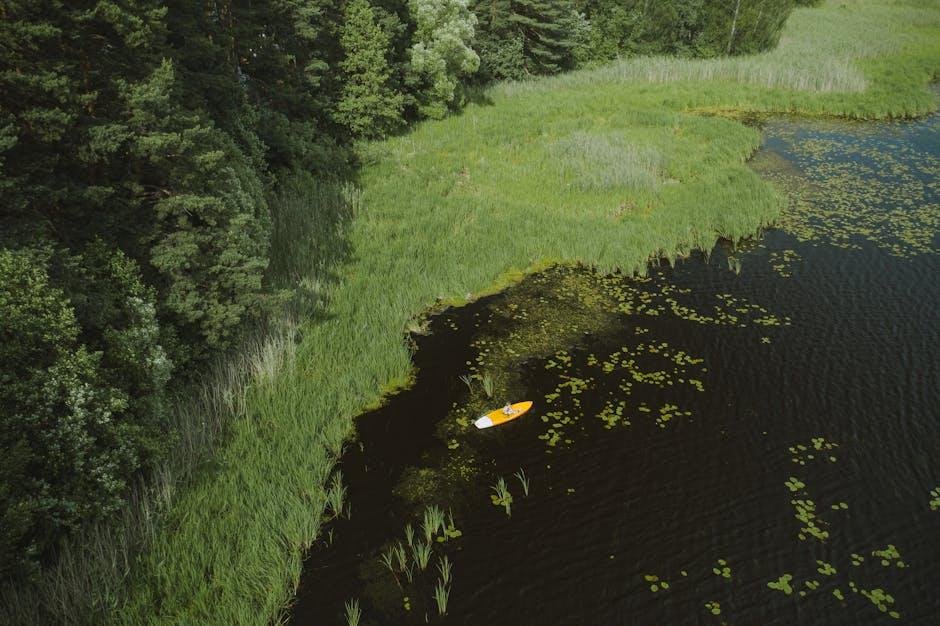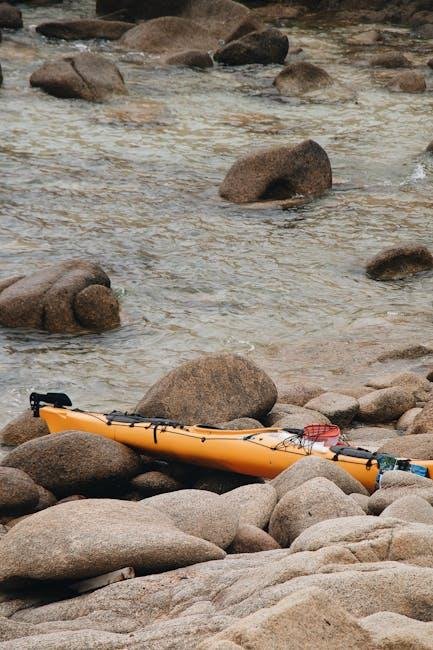Embarking on your kayaking journey can be both thrilling and daunting, especially when faced with the vast array of options available in today’s market. The world of kayaks is as diverse as the waterways they navigate, from serene lakes to roaring rivers, and each type of kayak comes with its own unique features and specifications. Whether you’re dreaming of tranquil afternoons gliding across calm waters or adventurous expeditions through rugged terrains, selecting the right kayak is the first step in transforming that dream into reality. In this simple guide, we’ll unravel the essentials of choosing your first kayak, helping you match your aspirations and skill level with the perfect vessel to set you on your aquatic adventures. So, grab your paddle and let’s dive into the essentials of finding a kayak that feels like an extension of yourself on the water.
Understanding Different Kayak Types for Beginners
When diving into the world of kayaking, the first step is understanding the various types available, as each one offers unique characteristics suited to different environments and paddling styles. some popular choices include:
- Recreational Kayaks: These versatile boats are perfect for calm waters and lakes, providing stability and ease of use for beginners.
- Touring Kayaks: Designed for long-distance trips,touring kayaks are longer and built for efficiency,accommodating open waters and coastal adventures.
- Whitewater Kayaks: Built to navigate rivers with rapids, these kayaks offer enhanced maneuverability and are typically shorter for rapid turns.
- Sit-on-top Kayaks: Ideal for warm weather and casual outings, sit-on-top models allow for easier entry and exit, making them great for beginners who may feel apprehensive.
It’s essential to consider what type of kayaking experience you envision for yourself. Here’s a quick comparison to help you weigh your options:
| Kayak Type | Best For | Stability |
|---|---|---|
| Recreational | Calm lakes and rivers | High |
| Touring | Longer trips in open water | Moderate |
| Whitewater | Fast-moving rivers | Low |
| Sit-on-top | casual, warm weather paddling | High |

Essential Features to Look for in Your First Kayak
When embarking on your kayaking journey, it’s crucial to consider several key features that will enhance your overall experience. First and foremost, stability is paramount, especially for beginners. A wider kayak generally offers better balance, making it easier to maintain control in various water conditions. Look for models that are designed specifically for beginners, often labeled as recreational kayaks, which prioritize stability and ease of entry. Additionally, the weight capacity is vital; ensure the kayak can accommodate both your weight and any gear you plan to bring along.
Next, consider the material of the kayak. Most kayaks are made from either plastic, fiberglass, or inflatable materials, each with its unique benefits. Plastic kayaks are durable and frequently enough more affordable, while fiberglass models are lighter but tend to come at a higher price point. If you opt for an inflatable kayak, look for options with high-pressure valves for enhanced stability and performance on the water. Lastly, don’t overlook the comfort features; adjustable footrests, padded seats, and ample storage space are essential for long outings, allowing you to enjoy your time on the water without discomfort.

Safety Gear and Accessories Every new Kayaker Should Consider
As you embark on your kayaking journey, investing in the right safety gear is crucial to ensure your adventures are not onyl enjoyable but also secure. First and foremost, a Personal Flotation Device (PFD) should be your top priority—this isn’t just a proposal; it’s a lifesaver. Look for a certified type that fits well and offers comfort during your excursions. In addition to a PFD, consider the following essentials:
- Helmet: Protect your head from impacts, especially in whitewater conditions.
- Whistle: A compact signaling device that can attract attention in emergencies.
- First Aid Kit: Be prepared for minor injuries with a kit tailored for outdoor use.
Equally crucial are accessories that contribute to both safety and convenience on the water. A bilge pump is an invaluable tool for removing water from your kayak, ensuring stability and comfort during a paddle. Additionally, a dry bag is essential for keeping your belongings safe and dry, particularly in unpredictable weather. Other accessories you may want to consider include:
- emergency Paddle: A small backup paddle fits easily in your kayak and can be a lifesaver if you lose your main paddle.
- Reentering Device: A simple strap that allows you to reenter your kayak after a capsize.
- Sun Protection: Sunscreen and a hat to shield yourself from harmful UV rays.

Tips for Testing a Kayak Before You Buy
Testing a kayak before making a purchase is crucial to ensure it meets your needs and comfort level. Start by visiting a local retailer or rental shop where you can try different models on the water. Pay attention to the kayak’s stability as you ease into it; a sturdy feel can significantly impact your confidence. Remember to consider factors such as weight capacity and dimensions; these play a significant role in your kayaking experience. Here are some essential aspects to evaluate:
- comfort: Sit in the kayak and assess the seat, back support, and legroom.
- Handling: Paddle around to check how well it responds to your movements.
- Tracking: Observe how straight the kayak goes when you paddle; good tracking is essential for efficient kayaking.
- Speed: Test the kayak’s speed to ensure it meets your requirements, especially if you plan on longer excursions.
During your test,don’t forget to try different paddling styles and speeds.This will help you gauge how the kayak handles in various conditions. Consider bringing along a friend for a side-by-side comparison. It’s also useful to take notes about each kayak’s features and performance, which can help you determine the best value for your investment. For a clear comparison, you could use a table like this:
| Kayak Model | Comfort Level | Stability | Tracking |
|---|---|---|---|
| Model A | High | Excellent | Good |
| Model B | Medium | Fair | Excellent |
| Model C | Low | Good | Fair |
Wrapping Up
As you embark on the exciting journey of selecting your first kayak, remember that the perfect vessel is one that resonates with your unique preferences and paddling aspirations. Whether you’re drawn to serene lakes, winding rivers, or the open ocean, the right kayak can unlock a world of adventure, connection to nature, and personal growth. With careful consideration of your needs, budget, and intended experiences, you can confidently traverse the waters ahead. We hope this guide has illuminated the path, helping you navigate through your options with ease. so grab your paddle, don your life jacket, and prepare to embrace the breathtaking beauty that awaits you on your kayaking adventures. Happy paddling!
